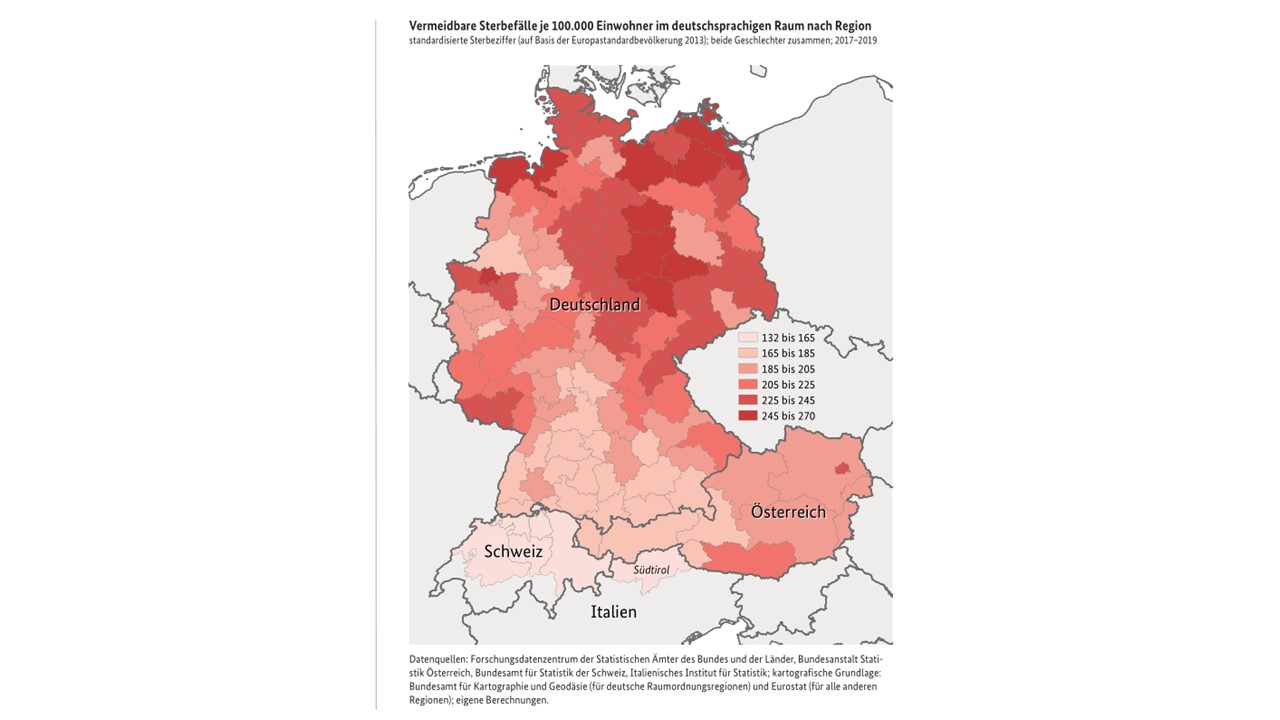Mortality in many instances is avoidable. Estimates Mühlichen et al. (2023) for Germany are as high as 19% of all deaths in the years 2017 to 2019. For men the figure is as high as 24%, for women “only” 13%. The scientific interest in the concept of avoidable death originates in the interest to indirectly gauge the efficiency of health systems. In order to do this the authors estimated cause-deleted life tables in a fine graded regional fashion. Avoidable deaths are defined as deaths that occur before the age of 75 and are either classified as medically preventable or preventable through a different life style. The study applies a quasi-experimental design in comparing German speaking regions within Europe. This allows to measure the influence of health care systems on a general level within Germany, Austria, Switzerland and South Tirol in Italy. The study corrects for different age structures in these regions. For Germany avoidable deaths are substantially higher in the North than in the South. Additionally Eastern parts of Germany have higher avoidable deaths. Even the best performing regions in Germany have higher rates of avoidable mortality than Switzerland.
The differential to other countries health systems is worth a concern, because the expenditure in the German health system per 1000 population are among the highest in Europe (OECD 2021). Despite the high expenditure per head, avoidable mortality remains particularly high for German men and in the North and East of Germany. Lack of prevention of unhealthy life styles is most likely the decisive factor to explain the disappointing results. There might be another “unaccounted” risk factor that originates in the lack of sufficient preventative health care and environmental risks during the young age of the regional populations. 33 years of unification and a cut-off age of 75 mean that in East Germany the oldest people lived through 40 years of high pollution coal as primary heating system. Similar to Northern and Western Germany little concern and careless use of risky fertilizers might drive higher mortality decades after exposure. Life style patterns might additionally contribute, but are harder to assess in comparison. Research to clarify these differentials are just at the beginning. A valid conclusion remains: prevention is key, but it has many facets. 

